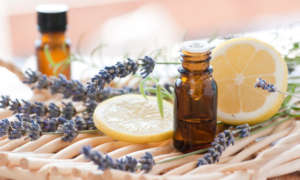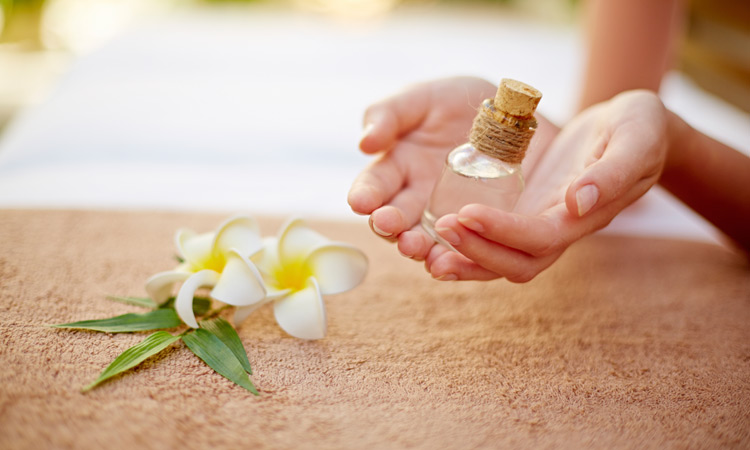In 1910 famous chemist, Rene-Maurice Gattefosse, was working in the laboratory of his family-owned cosmetics company when he severely burned his hand. To soothe the burn Gattefosse plunged his hand into the nearest liquid: a tub of lavender oil. Later, he was shocked by how well (and with nearly zero scarring) his burn healed. This experience initiated a lifelong fascination with essential oils and led to Gattefosse’s new nickname: “The father of aromatherapy.”
Today, science proves what practitioners have known for centuries: Essential oils can heal. In a study published in Life Sciences researchers proved that lavender oil can be used to effectively treat patients with bronchial asthma. Over a two-week course of daily inhalation the study revealed that in mice with induced asthma reduction of lung mucus reduced airway resistance. The anti-inflammatory effects of the oil inhibit airway resistance and reduce allergic inflammation. This is huge news for patients who struggle with bronchial and nasal allergies and seek alternative methods for relief.
According to the American College of Allergy, Asthma and Immunology, nasal allergies have a wide reach:
- Nasal allergies affect approximately 50 million people.
- The rising number of affected individuals may be as many as 30% of adults and 40% of children.
- Allergic diseases, which include asthma, are the fifth most prevalent chronic diseases in all ages, and the third most common in children.
Now, in addition to immunotherapy and other over-the-counter remedies, using essential oils for allergies may begin to play a larger role in reducing symptoms. Environmental consultant, Olivia Spencer, confirms that essential oils help reduce allergies through their anti-inflammatory, anti-itch, anti-irritation, anti-histamine and anti-fungal properties. “For some of us,” she explains, “our immune system goes into overdrive and it causes typical responses such as sneezing, coughing, mucus, watery eyes and inflammation of different parts of the skin…. Essential oils for allergies can help to ease or eliminate typical allergy symptoms quickly and naturally.”
 If you or someone you know is ready to explore how to use essential oils for allergies try these suggestions by Dr. Taz Bahtia, a physician who specializes in integrative medicine:
If you or someone you know is ready to explore how to use essential oils for allergies try these suggestions by Dr. Taz Bahtia, a physician who specializes in integrative medicine:
Lavendar: To reduce bronchial swelling and ease headaches
Lemon: For patients with chronic asthma (especially hard hit by pollen)
Peppermint: Clears airways, relieves headaches and adds energy boost
Eucalyptus: Functions as a decongestant and anti-germ agent
As with any remedy, using essential oils for allergies requires caution and exploration to determine what best suits you and your body. Safely using oils for treatment via inhalation or topical application can begin with a diffusion process: For example, release 2-3 drops on a tissue that you keep nearby, diffuse into the air via a fan diffuser, nebulizer, tea light or ultrasonic mist diffuser; or mix in a carrier oil (i.e. coconut, almond, apricot).
To get started today, try one of these dispersion methods with Gurunanda’s “Breathe Easy”:
1. Use one or two drops with an oil diffuser.
2. Rub the oil over your palms, cup your hands over your face and inhale.
3. Rub the oil mixture over your chest and collarbone. (Spencer cautions that some oils oils can create photosensitivity, so do not apply topically to areas that will soon be exposed to sun.)




1 Comment
Corey
I really enjoyed your article, Michele! I have recently been trying to further educate myself on the vast array of essential oil benefits, would you mind if I asked you a few questions on the topic? I would really appreciate your professional insight! Thank you for your time and consideration 🙂